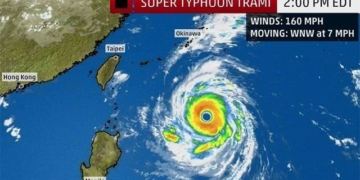Olympus Mons on Mars is the largest volcano in the Solar System and is believed to be the tallest among the eight planets. It rises 2.4 times higher than Mount Everest, and you must view it from space to appreciate its full grandeur.
Olympus Mons stands over 21,171 meters above the Martian reference point, which is about 2.4 times the height of Mount Everest (including the thickness of snow at the summit – 8,848 meters above sea level). However, if measured from the base to the peak vertically, Olympus Mons reaches an astonishing height of 21,900 meters.
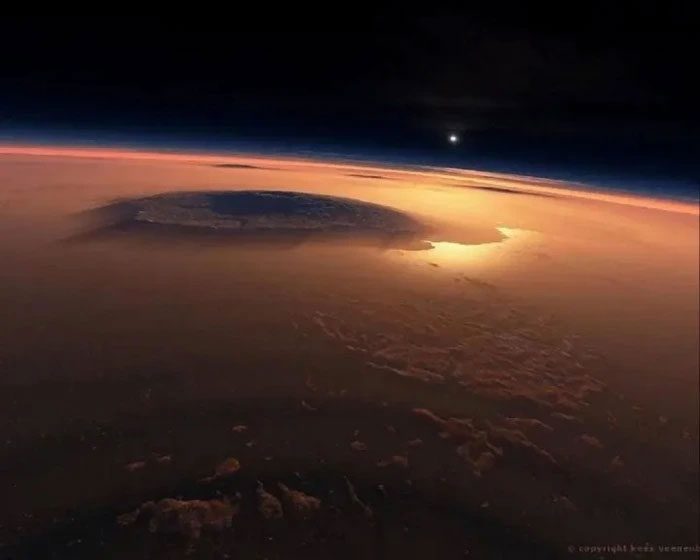
Olympus Mons is a shield volcano on Mars. A shield volcano is characterized by its broad, gentle slopes resembling a shield. Such volcanoes are also abundant on Earth; for example, the Big Island of Hawaii is a typical shield volcano, covering an area of 10,414 km² and standing about 4,000 meters tall.
Some argue that its height may not be accurate since there are no oceans on Mars. However, although Mars lacks sea level, the reference point mentioned here is equivalent to sea level on Earth. Moreover, this point is not the lowest on Mars’ surface; for instance, the plains located 1,000 km northwest of Olympus Mons are over 5,000 meters lower than the Martian reference point.
If we take this plain as a reference point, the vertical height of Olympus Mons would reach up to 26 km.
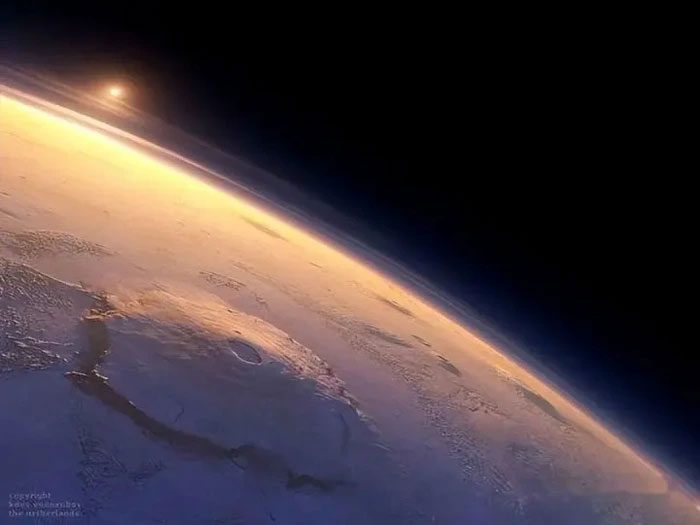
If the geodetic datum of Mars were equivalent to Earth’s sea level, then the height of Olympus Mons would be nearly 2.4 times that of Earth’s Everest! The summit crater of this shield volcano consists of six overlapping calderas, measuring 80 by 60 km.
The deepest part of Earth’s oceans is the Mariana Trench, which plunges to depths of about 11,000 meters, but this does not represent the average depth of the entire ocean. The average depth of Earth’s oceans is roughly 3,700 meters; if this depth serves as Earth’s geodetic datum, the absolute height of Mount Everest would be 12,548 meters, indicating that it still falls significantly short compared to Olympus Mons on Mars.
Olympus Mons is located at 18.65 degrees North latitude and 226.2 degrees East longitude on Mars. The overall width of the mountain is about 600 km, meaning the average horizontal distance from the base to the summit can reach up to 300 km. Therefore, Olympus Mons cannot be observed from its base, and it can only be fully appreciated from space.
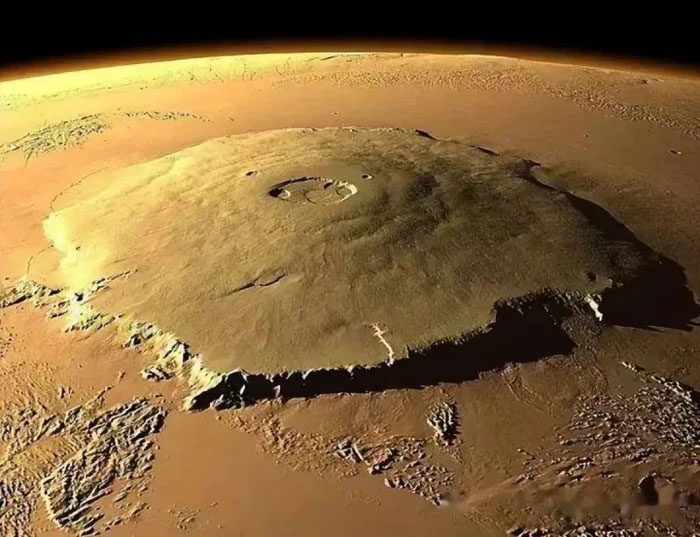
To this day, the grandeur of Olympus Mons remains unparalleled in the Solar System, and no other planet has been found to host a mountain of its size. Due to its massive size, we cannot see its full image from the surface of Mars.
Mount Everest is the highest peak of the Himalayas, with an average height of 6,000 meters, formed by the collision and uplift of two major tectonic plates. Unlike Olympus Mons, the slopes of Everest are steep, with the northern face averaging a gradient of 45 degrees, featuring many sheer cliffs that make climbing quite challenging.
Although Olympus Mons has a significant vertical height, it is not as steep as Mount Everest. Its slopes are very gentle, so it can be said that climbing Olympus Mons would present fewer challenges compared to ascending Everest.
Olympus Mons is a volcano that has erupted in the past, but its core has gradually cooled, and now it is a dormant volcano, regarded as the largest volcano in the Solar System, covering an area of approximately 300,000 km².
Olympus Mons is a shield volcano, and this type of volcano also exists on Earth. Mauna Loa (Hawaiian: Mauna Kea) is one of the largest shield volcanoes on Earth. Furthermore, Mauna Loa is also the mountain with the greatest height difference from base to summit on Earth, measuring 10,203 meters from its base at 5,998 meters below sea level in the Pacific Ocean to its summit at 4,205 meters above sea level.
The mountain is primarily composed of rock, so its capacity to withstand pressure is limited. Scientists indicate that Earth’s gravitational environment imposes a limit on mountain height; mountains on Earth cannot exceed 20,000 meters, and it is even challenging to surpass 15,000 meters. The height of Mount Everest previously exceeded 10,000 meters, but it was quickly adjusted downward.
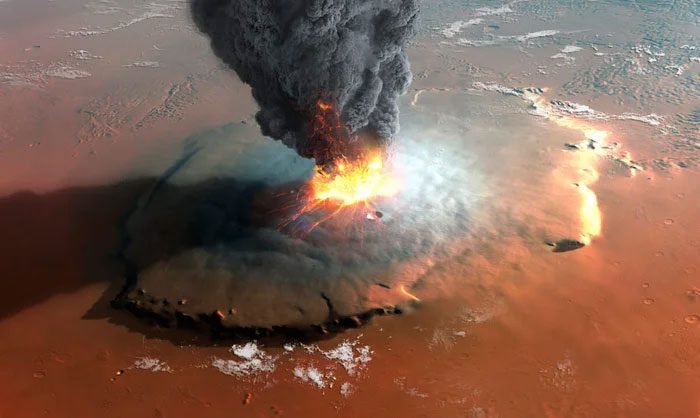
The presence of taller mountains on Mars is attributed to its considerably lower gravity; the volume of this planet is only 1/7 that of Earth, and its mass is merely 1/11 that of Earth.
The atmospheric pressure on Mars is exceptionally low, approximately 0.75% of Earth’s atmospheric pressure, and at the summit of Olympus Mons, the pressure there is only 8% compared to Martian baseline; at the summit of Everest, atmospheric pressure is 33%. Thus, it is evident that the environment at Olympus Mons would be far more hostile and severe than that at Everest.
The smaller mass and lower gravity result in a greater height limit for mountains. In fact, the smaller the mass of planets in the universe, the less spherical their shape becomes, and the maximum height of peaks on their surfaces far exceeds those on Earth.


















































